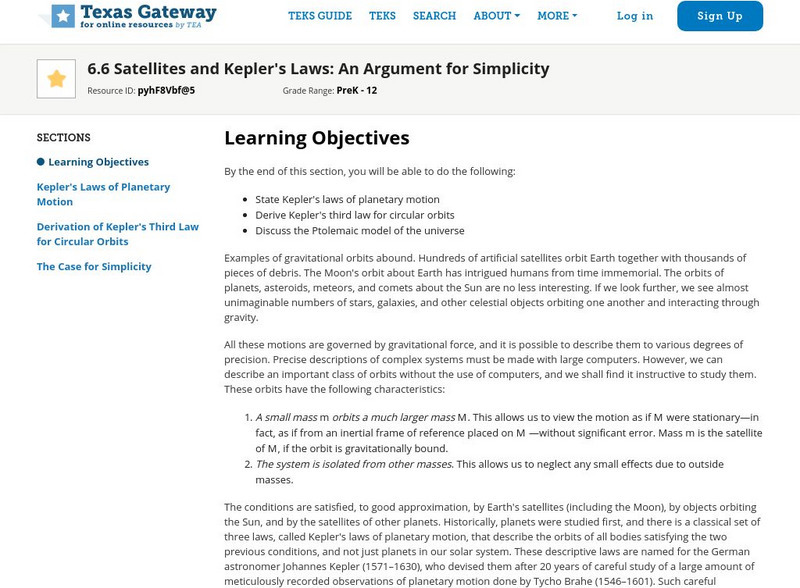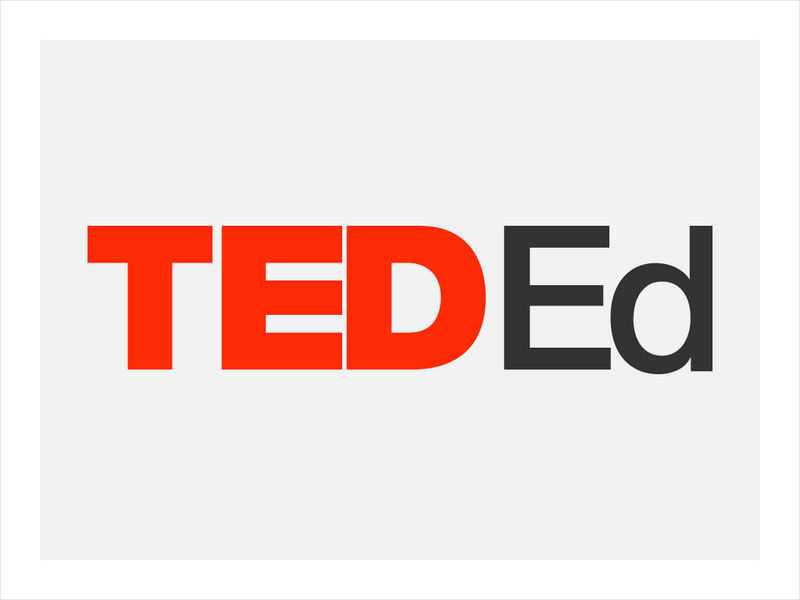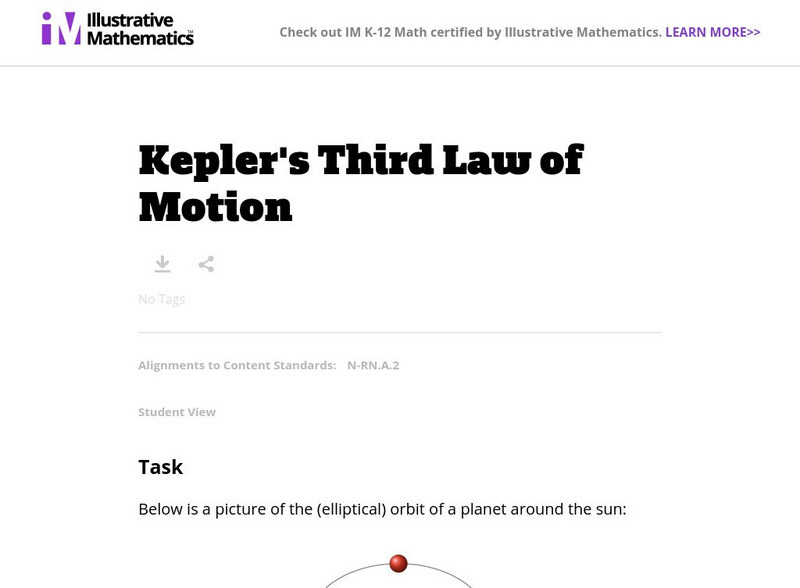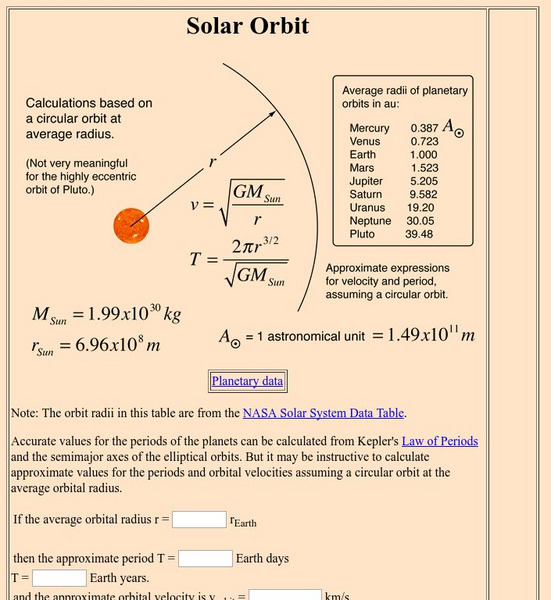Curated OER
Calculating Orbital Speeds
Learners are introduced to the regularities of planetary motion. They create a spreadsheet to calculate the speed of any orbiting body at apogee and perigee. Students then use the spreadsheet to compare the speeds of planets, moons,...
Curated OER
Universal Gravitation and Kepler's Laws
Learners develop problem-solving strategies dealing with Kepler's laws of planetary motion. they examine the law of universal gravitation and continue with problem-solving strategies. Students complete a take-home quiz.
Curated OER
Motion Through the Ages
Eighth graders conduct internet research to produce a timeline of man's growth in understanding of concepts of motion and planetary motion through history.
Curated OER
Adding the Moon: Using a Playground Model to Explore the Movement of the Sun, Earth, and Moon
Students experience the rotation of the Earth and the Moon, and the revolution of the Moon around the Earth using a playground model.
American Association of Physics Teachers
Com Padre Digital Library: Open Source Physics: Kepler System Model
This site from Open Source Physics offers a file with a simulation of Kepler's theory of planetary motion, tested with the Earth rotating around the sun and another planet of the user's choosing. The download requires Java.
American Association of Physics Teachers
Com Padre Digital Library: Open Source Physics: Copernican System Model
The Copernican system of planetary motion is clarified in this simulation.
American Association of Physics Teachers
Com Padre Digital Library: Open Source Physics: Celestial Globe Model
Users have the opportunity to adjust several variables in this simulation demonstrating the Ancient Greek's Two Sphere Universe theory.
Enchanted Learning
Enchanted Learning: The Planets
This survey of the planets includes all the basics, size, mass, atmosphere, length of day, and the like. It features interactive activities and learning exercises and compares all of the planets in colorful tables.
Texas Education Agency
Texas Gateway: Satellites and Kepler's Laws: An Argument for Simplicity
By the end of this section, you will be able to state Kepler's laws of planetary motion, derive Kepler's third law for circular orbits, and discuss the Ptolemaic model of the universe.
CK-12 Foundation
Ck 12: Physics Simulation: Orbital Motion
[Free Registration/Login Required] Understand angular momentum conservation in the absence of an applied torque in the context of planetary orbits using this interactive simulation. A PDF worksheet and a video tutorial are also...
Massachusetts Institute of Technology
Mit: Open Course Ware: Orbits of Planets and Satellites
Students explore orbits of planets and satellites. Some topics examined in the activities are planetary motion, angular momentum of orbits, and Kepler's laws. The resource consists of video clips, lecture notes, practice problems, and...
NASA
Nasa: Kepler and His Laws
This site from NASA provides biographical details about the lives of Tycho Brahe and Johannes Kepler. Discusses Kepler's successes at developing laws of planeatry motion. States the three laws and discusses each one individually....
University of Virginia
University of Virginia: The Studies of Kepler
Biographical information of the early life of Kepler is provided as well as a somewhat detailed look at the highs and lows of his work in studying planetary motion.
Texas Instruments
Texas Instruments: Multiple Choice Planetary Motion Study Cards
Kepler's Laws 1,2,3 including eccentricity of elliptical orbits. Good for reviewing planetary motions (NYS Earth Science).
TED Talks
Ted: Ted Ed: Tycho Brahe, the Scandalous Astronomer
Dan Wenkel dives into the history behind 16th century astronomer, Tycho Brahe explaining how he continued to inspire intrigue even after his death. [4:08]
Physics Classroom
The Physics Classroom: Circular and Satellite Motion Table of Contents
Learners investigate planetary motion, satellite motion, universal gravitation, and circular motion. The tutorial consists of lessons, formulas, and problems to check for understanding.
Physics Classroom
The Physics Classroom: Mathematics of Satellite Motion
The mathematics associated with the motion of satellites is described. Equations (for period, velocity, acceleration and force) are stated, symbols described, and sample problems solved. Includes five practice problems with solutions and...
Physics Classroom
The Physics Classroom: Kepler's Three Laws
The three laws of planetary motion as described by Kepler are stated and elaborated upon. Useful graphics and an easy-to-understand language are used to explain the nature of planetary motion. Both conceptual and mathematical. Includes a...
Georgia State University
Georgia State University: Hyper Physics: Kepler's Laws
An outstanding page describing Kepler's three laws of planetary motion.
Physics Aviary
Physics Aviary: Practice Problems: Finding Mass of a Planet
Students must determine mass of a planet based on the orbital motion of a satellite around the planet.
Physics Classroom
The Physics Classroom: Circular and Satellite Motion: Kepler's Three Laws
Through interactive practice problems and examples, students explore Kepler's Three Laws of Planetary Motion.
Physics Classroom
The Physics Classroom: Circular and Satellite Motion: Principles for Satellites
Students explore how a satellite's motion is governed by the same physics principles and described by the same mathematical equations.
Illustrative Mathematics
Illustrative Mathematics: N rn.a.2: Kepler's Third Law of Motion
The purpose of this task is to solve some expressions requiring fractional exponents in the modeling context of planetary motion. Aligns with N-RN.A.2.
Georgia State University
Georgia State University: Hyper Physics: Solar Orbit
A table listing the average radius of orbit for the nine planets about the sun; expressed in astronomical units. Data can be used to calculate the orbital speed or the orbital period.



















